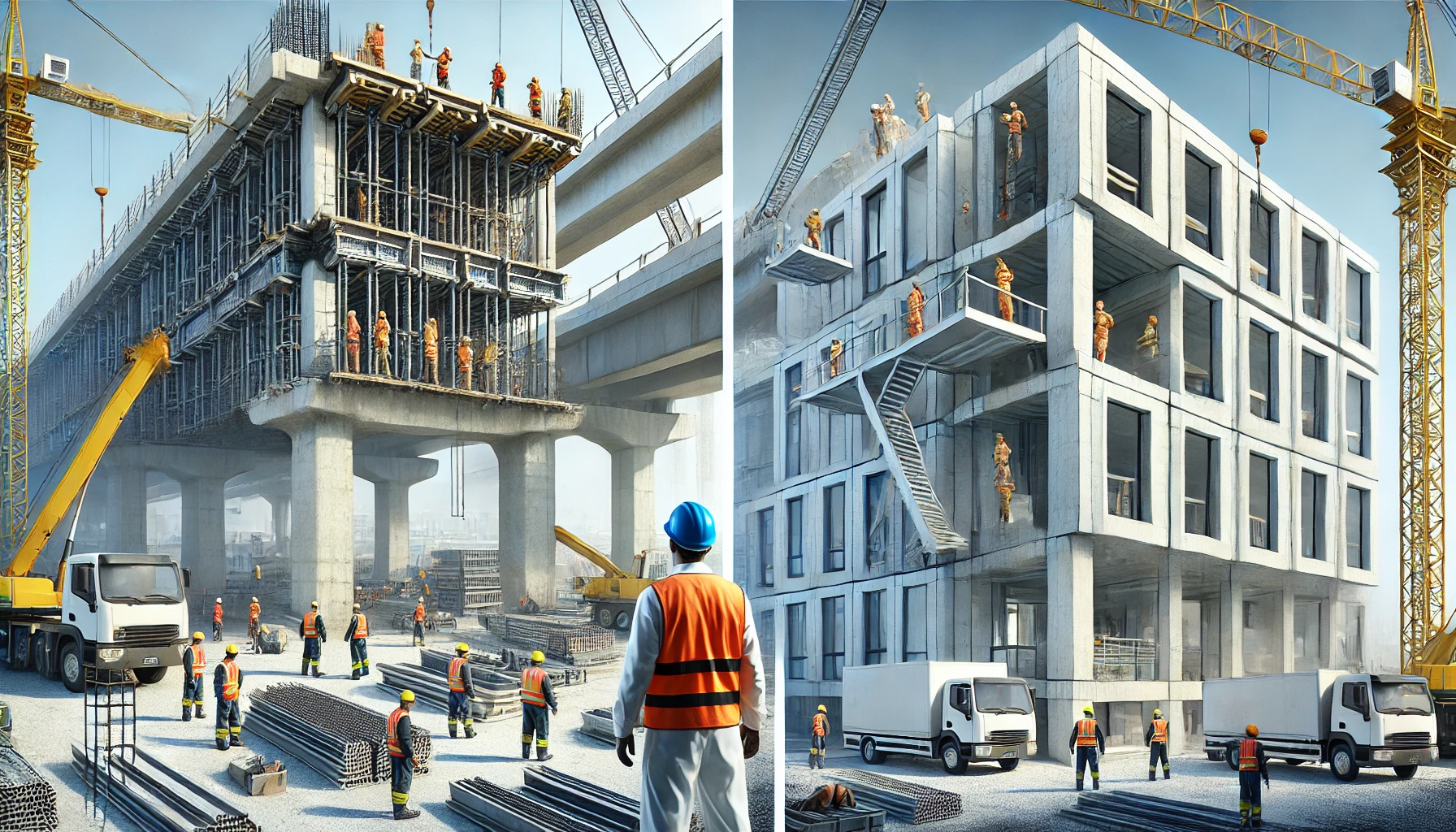The terms precast and prefabricated construction are often used interchangeably, but they refer to different construction methods. Both approaches involve off-site manufacturing, which speeds up construction and improves quality control. However, they differ in terms of materials, applications, and structural characteristics.
Understanding the key differences between precast and prefabricated construction can help builders, architects, and developers choose the best method for their projects.
What is Precast Construction?
Precast construction refers to the off-site manufacturing of concrete components, which are then transported and assembled at the construction site. These components include:
- Walls and panels
- Columns and beams
- Slabs and staircases
- Bridge sections and infrastructure elements
Once the concrete is poured into custom molds, it is cured in a controlled environment, ensuring higher strength and durability compared to traditional on-site poured concrete.
Where Precast Construction is Used:
- Bridges and highways
- Industrial buildings and warehouses
- Residential and commercial structures
- Tunnels, railways, and large infrastructure projects
What is Prefabricated Construction?
Prefabricated construction, or modular construction, refers to the off-site manufacturing of entire building sections, which are later transported and assembled on-site. Unlike precast concrete, prefabrication can involve a variety of materials, including:
- Steel frames
- Wood panels
- Lightweight concrete
- Glass and composite materials
Prefabricated structures are often fully equipped with insulation, plumbing, electrical wiring, and finishes before being transported.
Where Prefabricated Construction is Used:
- Modular homes and apartment buildings
- Hotels and office spaces
- Schools, hospitals, and emergency shelters
- Temporary buildings and mobile structures
Key Differences Between Precast and Prefabricated Construction
| Feature | Precast Construction | Prefabricated Construction |
|---|---|---|
| Material Used | Primarily concrete | Can use wood, steel, concrete, or composite materials |
| Components | Structural elements (walls, beams, slabs) | Entire sections or modules (rooms, apartments, offices) |
| Manufacturing Process | Molded in factories or plants, then cured | Built in factories as complete modules |
| Assembly Method | Assembled like a puzzle on-site | Installed as full units on-site |
| Best For | Infrastructure, industrial, and large-scale projects | Residential, commercial, and mobile structures |
| Construction Speed | Faster than traditional concrete but requires on-site assembly | Faster than precast since units are already finished |
Advantages of Precast Construction
✅ High Durability: Precast concrete is extremely resistant to weather conditions, fire, and pests.
✅ Greater Structural Strength: Ideal for bridges, tunnels, and high-rise buildings.
✅ Lower Maintenance Costs: Concrete components last longer and require minimal upkeep.
🔹 Best for: Large infrastructure and industrial projects.
Advantages of Prefabricated Construction
✅ Faster Construction Time: Since modules arrive fully built, on-site work is minimal.
✅ More Design Flexibility: Can be customized with different materials and layouts.
✅ Energy Efficiency: Prefabricated buildings often have better insulation and eco-friendly designs.
🔹 Best for: Homes, offices, and commercial buildings.
Which Method is Right for Your Project?
🔹 Choose Precast Construction if:
✔ You are building bridges, highways, or tunnels.
✔ You need structural strength and durability.
✔ You want low maintenance and long lifespan.
🔹 Choose Prefabricated Construction if:
✔ You need a quick and efficient building process.
✔ You want customization and flexibility in design.
✔ You are working on residential, commercial, or modular projects.
The Future of Precast and Prefabricated Construction
As technology advances, automation, AI, and 3D printing are making both precast and prefabricated construction more efficient and sustainable. Governments and private companies are investing in these methods to address housing shortages, infrastructure development, and eco-friendly construction demands.
Would you choose precast or prefabricated construction for your next project?

